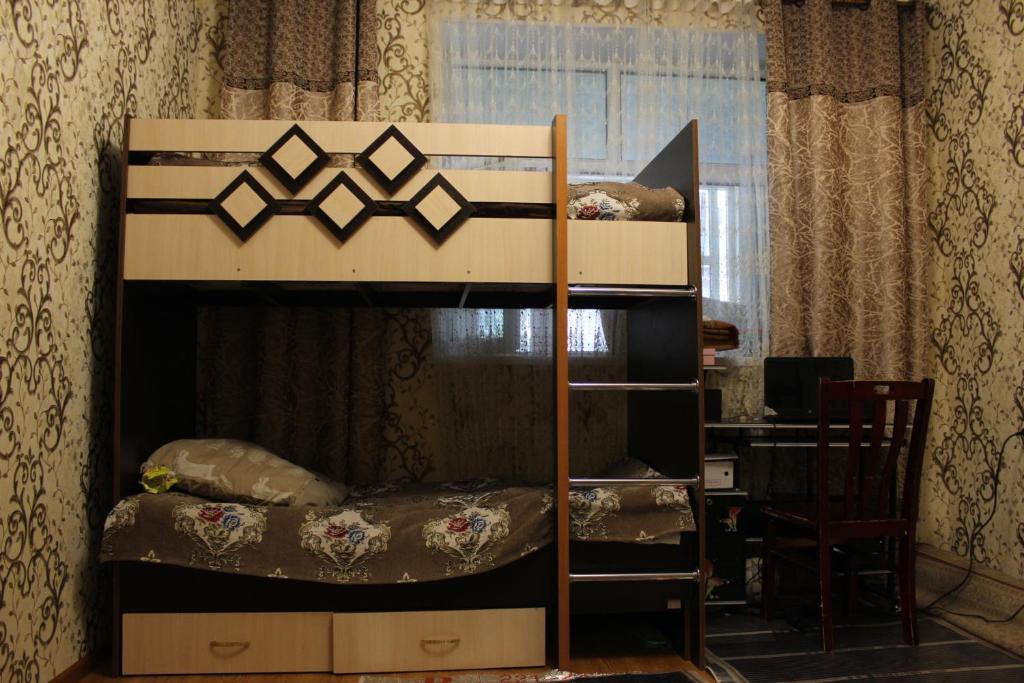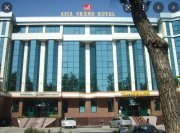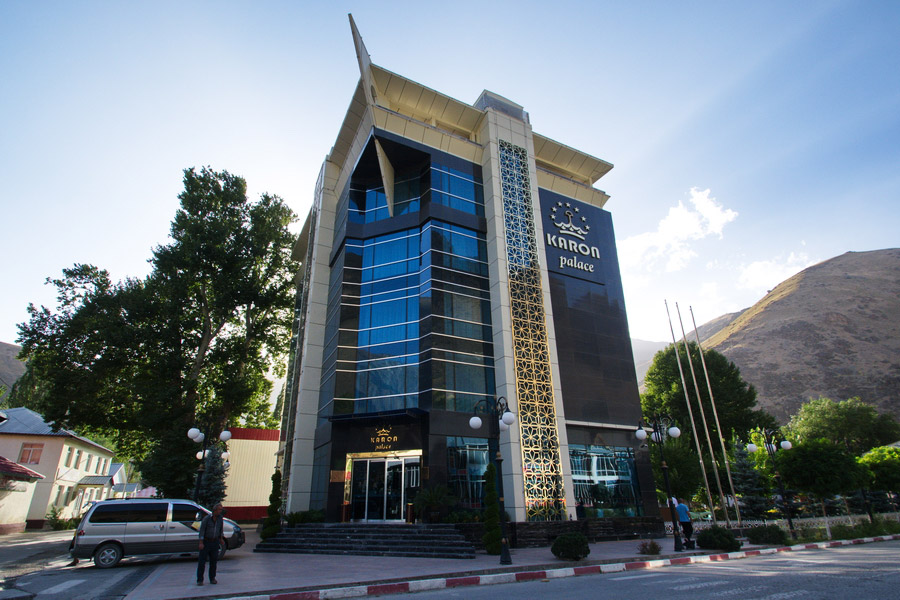Tajikistan is the land of the highest peaks, powerful glaciers, rapid, turbulent rivers, unique beautiful lakes, unique vegetation and rare animals. It is the mountain, floor landscape that determines the distinctiveness and uniqueness of the nature of Tajikistan, the richness of its forms brought by the diversity of climatic zones. In the republic, in an hour and a half of flight from the sultry heat of the Vakhsh valley, you can get into the arctic cold of the eternal snows of the Pamirs.
About 93% of Tajikistan is covered by mountains, extending west from the Himalayas. Only minor parts in the south and far north have an elevation that not exceeds 1000 meters. The greatest altitudes are in the east of the country, which hosts some of the highest peaks in the world rising up to 7.495 meters. The mountains are still actively building up, giving them a rough and majestic aspect.
The greatest, mysterious, which lost in the wilds of Asia – the Pamir Mountains have always excited the minds. Sharp peaks seemed unattainable, deep rocky gorges were impregnable, winding roads leading into the clouds were unreliable. The mountain peaks rising to the sky remember the Persian kings, the mysterious Bactria and the troops of Alexander the Great, here the path of Tamerlane and Bobur, Marco Polo and dozens of pioneer explorers of glaciers and mountains lay.
Moreover, along the roads laid over the abyss, caravans carried Chinese silk, lapis lazuli and rubies obtained in local mines. Today we know much more about the Pamirs, but we never cease to be amazed at its beauty and diversity. Before the widespread development of the Himalayas, the Pamirs were referred to as the “roof of the world”. Around it, the gigantic mountains of Asia join in a tight ring: the Himalayas, Karakorum, Hindu Kush, Gissar-Alai, Tien Shan and Kunlun.
The Pamir Mountains are separated by Tajikistan, Kyrgyzstan, China, Pakistan and Afghanistan. In addition, everywhere they appear to travelers different, but invariably – exciting.
DESTINATION: Chine (Kalasu) or Kyrgyzstan (Osh), Kyzyl-Art border – Karakul (225 km from Kalasu, 52 km from Osh border) – Bukunkul (250 km) – Khorug (195 km) – Kalai Khumb (245 km) – ancient city of Karon – Kulob – Hulbuk Fortress – Dushanbe (360 km)
ARRIVAL DAY, KARAKUL LAKE
Until 10:00 - Pick up guests from the China / Kalasu or Kyrgyzstan (Osh), Kyzyl-Art border and departure to Karakul Lake
13:00 - Lunch on the way
16:00 / 14:00 - Arrival Karakul Lake
Karakul Lake Karakul, Qarokul (replacing the older Tajik name Siyohob) - is a 25 km diameter lake within a rather large 52 km (32 mi) impact crater. It is located in the Tajik National Park in the Pamir Mountains in Tajikistan.
Karakul lies within a circular depression interpreted as an impact crater with a rim diameter of 52 km (32 mi). Some estimates give its age as relatively recent. Preliminarily, it was thought to be c. 25 Ma or less than 23 Ma. However, it may even be from the recent Pliocene (5.3 to 2.6 Ma). The Earth Impact Database (EID) also lists it as younger than 5 Ma.
The lake/crater lies at an elevation of 3,960 m (12,990 ft) above mean sea level. A peninsula projecting from the south shore and an island off the north shore divide the lake into two basins: a smaller, relatively shallow eastern one, between 13 to 19 m (43 to 62 ft) deep, and a larger western one, 221 to 230 m (725 to 755 ft) deep.
19:00 - Dinner and accommodation to Karakul hostel
KARAKUL – BULUNKUL
07:00 - Breakfast at hostel and departure
10:00 - On the way, Murgab sightseeing and continue trip
MURGHOB is district in Mountains of Badakhshan, Tajikistan, with a population of just under 7,500. It is the highest town in Tajikistan at 3,650 meters above sea level. It is where the Pamir Highway crosses the Bartang river. The Pamir Highway goes north to Sary-Tash and on to Osh in Kyrgyzstan. Another road goes east over the Kulma Pass to the Karakoram Highway in China connecting to Tashkurgan to the south and Kashgar to the north.
13:00 - Lunch on the way
18:00 - Arrival and sightseeing of Bulunkul village and lake
BULUNKUL is alpine lake of Badakhshan located at the altitude of 3734 m above sea level. Bulunkul lake is connected with Yashilkul lake by narrow channel. The water is fresh and has rich flora and fauna. A flocks of ducks, geese and sea gulls are always can be seen over the lake. Bulunkul lake is the first basin at Pamirs were fishing was introduced to locals and now from May thru October the fishermen set their nets near the rivers mouths flow in to the lake catching osman and marinka. The lake's area is also known for being one of the coldest places in Central Asia, the lowest temperature here in winter was registered here at -63 Centigrade
20:00 - Dinner and accommodation to Avlaz homestay
BULUNKUL – KHORUG
07:00 - Breakfast at hostel and departure
13:00 - Arrival Khorug and lunch
14:00 - Khorug sightseeing
Khorog (taj. Khorug) is a city in Tajikistan, the administrative center of the Gorno-Badakhshan Autonomous Region (GBAO) - Pamir. The city is located at an altitude of 2600 m above sea level. By highway, Khorog is connected with the capital of the country - the city of Dushanbe and the Osh region of Kyrgyzstan. Khorog is an important regional center for trade, transport and education. The city has such educational institutions as: Khorog State University, affiliate of the International University of Central Asia (UCA) etc. Khorog is the main tourist center of the Pamirs, and is also one of the starting points for tourists to the main attractions of the Pamirs. Every year, thousands of tourists from around the world travel to the Pamirs to see the beautiful nature, majestic mountains covered with eternal snow, Lake Sarez and many other amazing corners of the Pamirs.
Botanical garden
At the eastern end of the city is the Pamir Botanical Garden - the highest mountain in the CIS and the second highest above sea level in the world (2320 m), after the Botanical Garden of Nepal. The garden was founded in 1940. The collection of the botanical garden includes more than 4 thousand species of plants from all regions of the world. During the period of independence of Tajikistan, the garden continues to function successfully, scientific work is being carried out
19:00 - Dinner and accommodation to hotel
KHORUG – KAL’AI KHUMB
08:00 - Breakfast at hotel and departure
13:00 - Lunch on the way
16:00 - Arrival Kalai Khumb and sightseeing ancient city Karon
Notes: in case of reconstruction of the road perhaps we will transfer from Khorug to Kalai Khumb at night time
Ancient city Karon
Tajik and Russian archaeologists in 2012 found the ancient city of Karon on the territory of the Darvaz region of the Gorno-Badakhshan Autonomous Region. Temples, fragments of a five-domed church, a temple of fire, water, two temples of the wind, a windmill, a fragment of the sacred book of the Zoroastrians "Avesta", the remains of a large polo ground, halls, administrative and residential premises were found. building. The ruins were found in the ancient city, which is supposedly one of the largest mountain "residences" of local kings
19:00 - Dinner and accommodation to hotel
KAL’AI KHUMB – DUSHANBE
07:00 - Breakfast at hostel and departure
10:00 - Arrival Kulob and sightseeing of the city, Mir Said Ali Hamadoni complex and Hulbuk fortress
Complex of Mir Said Ali Hamadoni
In the center of the city of Kulyab, in the park area, there is a memorial complex of Mir Said Ali Hamadoni - a poet, philosopher and thinker of the 14th century. His son Muhammad, relatives, as well as Sheikh Shokhi Tolikoni from the Afghan city of Tolukan, a former inspector of the mausoleum and mosque, are also buried there. The complex includes the local history museum of the 2700th anniversary of Kulyab, the museum of the literary heritage of the writer Mirsaid Ali Hamadoni and the house-museum of the national poet Saydali Valizod. Every year the museum is visited by more than two million visitors, both local and foreign guests.
Hulbuk Fortress
On the way to Kulyab we will visit the Hulbuk Fortress (165 km from Dushanbe). From the 9th to the 11th centuries, the Hulbuk Fortress was located in the center of one of the four largest cities in Central Asia, it was the residence of Shah (King) Khatlon. The citadel was guarded by a giant salt hill, which at that time was of great importance as the source of one of the three precious resources (along with gold and horses) traded on the Silk Roads
13:00 - Lunch on the way
19:00 - Arrival Dushanbe, dinner and accommodation to hotel
End of the tour
The guests will be drop off to the Dushanbe international airport any time until 06:00 next day


